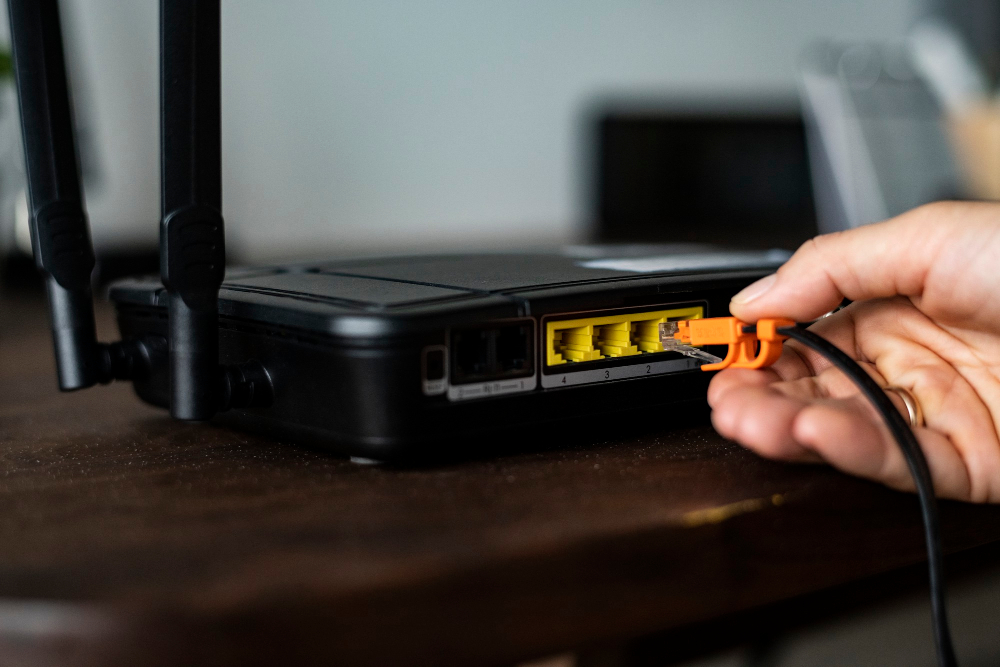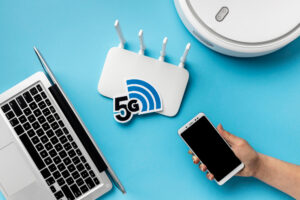In today’s fast-paced, connected world, having reliable and fast internet is essential. With increasing demand for high-speed internet in homes, offices, and public spaces, both Wi-Fi and 5G networks have emerged as the top contenders to fulfill these needs. But which one is better for your high-speed internet requirements? Should you rely on traditional Wi-Fi or embrace the cutting-edge 5G technology?
This article delves into the key differences between Wi-Fi and 5G, examining their capabilities, advantages, and limitations to help you decide which technology is better for your internet needs.
Understanding Wi-Fi and 5G
Before diving into the comparison, it’s important to understand what Wi-Fi and 5G are and how they work.
Wi-Fi: The Traditional Wireless Networking Technology
Wi-Fi is a wireless networking technology that allows devices to connect to the internet via a router or access point. It uses radio waves to transmit data between the router and devices such as smartphones, laptops, and tablets. Wi-Fi operates in various frequency bands, typically 2.4 GHz and 5 GHz, with newer standards like Wi-Fi 6 (802.11ax) offering faster speeds, improved efficiency, and better performance in crowded environments.
Wi-Fi is commonly used in homes, offices, and public spaces to provide internet access over short to medium distances, typically within the range of 30 to 100 feet, depending on the router and environment.
5G: The Next-Generation Mobile Network
5G, short for “fifth generation,” is the latest mobile network technology designed to provide ultra-fast internet speeds, low latency, and higher capacity than its predecessors. Unlike Wi-Fi, 5G operates on a cellular network infrastructure, allowing users to access the internet through mobile carriers like Verizon, AT&T, and T-Mobile.
5G promises speeds that can reach up to 10 Gbps (gigabits per second), which is significantly faster than current 4G networks. It uses higher frequency millimeter waves (24 GHz and above) to achieve these lightning-fast speeds, although it also uses lower frequencies for wider coverage and reliability.
Wi-Fi vs. 5G: Key Differences
Let’s now break down the main differences between Wi-Fi and 5G based on several important factors:
1. Speed and Performance
One of the primary reasons people look for high-speed internet is to improve their overall internet experience. This includes faster downloads, smoother streaming, quicker video calls, and lag-free online gaming.
- Wi-Fi: With the introduction of Wi-Fi 6, the speeds you can achieve on Wi-Fi networks have greatly improved. Wi-Fi 6 offers speeds of up to 9.6 Gbps under optimal conditions. However, the actual speed you’ll get will depend on factors like your router, the number of devices connected to the network, and physical obstacles like walls.
- 5G: 5G technology is built to provide lightning-fast speeds, with potential peak speeds of 10 Gbps. 5G outperforms Wi-Fi in terms of raw speed potential, especially when it comes to outdoor mobile use and environments where network congestion is minimal.
Winner: For maximum speed potential, 5G has the edge, but for home and office use, Wi-Fi 6 provides more than enough speed for most users.
2. Coverage Area
Coverage area is another crucial factor when comparing Wi-Fi and 5G, especially if you’re considering where each technology will work best.
- Wi-Fi: The range of a Wi-Fi network is limited by the signal strength of your router. Wi-Fi signals typically cover a few hundred feet, though performance drops as you move further away from the router or encounter walls and obstructions. In larger homes or offices, you may need additional routers, extenders, or mesh systems to cover the entire area.
- 5G: 5G coverage can span large distances, especially when relying on low-band 5G frequencies (sub-1 GHz). However, high-band 5G (millimeter waves) offers faster speeds but has a shorter range and is more prone to interference from physical obstacles.
Winner: While Wi-Fi is generally suitable for smaller indoor spaces, 5G offers superior coverage over wider areas, especially for outdoor mobile use.
3. Latency (Connection Delay)
Latency refers to the time it takes for data to travel from one point to another across the network. Lower latency is essential for applications like gaming, video conferencing, and real-time communications.
- Wi-Fi: Wi-Fi 6 offers relatively low latency compared to older standards, but Wi-Fi networks can still experience some delay, especially when multiple devices are connected or if the router is placed in a location with interference.
- 5G: 5G is designed for ultra-low latency, potentially as low as 1 millisecond, which is ideal for real-time applications like autonomous vehicles, augmented reality (AR), and virtual reality (VR). It significantly outperforms Wi-Fi in terms of latency.
Winner: 5G takes the lead in terms of latency, offering nearly real-time connection speeds.
4. Device Connectivity
The number of devices that can connect to a network simultaneously is another consideration for Wi-Fi and 5G.
- Wi-Fi: Modern Wi-Fi routers, especially Wi-Fi 6 routers, are designed to handle a large number of devices at once. Wi-Fi 6 also introduces improved bandwidth management, ensuring that multiple devices connected to the same network receive adequate speeds.
- 5G: 5G is engineered to support a massive number of connected devices in dense environments, such as cities or stadiums. 5G can efficiently manage traffic and ensure that even when many devices are connected to the same network, everyone enjoys a seamless experience.
Winner: Both technologies handle multiple devices well, but 5G has a slight advantage in ultra-dense environments.
5. Cost and Accessibility
Cost is a crucial factor when deciding which internet solution to use.
- Wi-Fi: Setting up Wi-Fi in your home or office typically requires purchasing a router or mesh system. Once the initial setup is complete, the cost is relatively low, with most ISPs offering affordable monthly plans for home Wi-Fi.
- 5G: Accessing 5G requires a 5G-capable device and a compatible mobile carrier plan. The cost of 5G plans is typically higher than standard Wi-Fi plans, and coverage may not yet be available in all areas, particularly rural locations.
Winner: Wi-Fi is generally more affordable and accessible than 5G, especially for residential use.
Which Is Better for Your High-Speed Internet Needs?
The choice between Wi-Fi and 5G depends largely on your specific use case and requirements. Here’s a breakdown of which technology is best suited for different scenarios:
- Home Use: For most households, Wi-Fi is the preferred option. It offers sufficient speed and coverage for everyday activities like streaming, browsing, and working from home. Wi-Fi 6 is also capable of handling multiple devices and providing stable connections across a medium-sized home.
- Mobile Use: If you’re constantly on the go and need internet connectivity wherever you are, 5G is the clear winner. With its fast speeds and low latency, 5G provides an unparalleled mobile internet experience.
- Business and Office Use: For small to medium-sized offices or businesses, Wi-Fi is typically sufficient, as it can provide stable and secure connections for multiple devices within a defined area. However, 5G may be a valuable addition for businesses that require mobility, such as those with remote workforces or outdoor operations.
Wi-Fi and 5G are both powerful technologies that offer high-speed internet capabilities. While Wi-Fi is ideal for home and office use, offering reliable and cost-effective coverage, 5G provides a superior option for mobile use with unmatched speeds and low latency. Ultimately, the best choice depends on your specific needs—whether you’re looking for a home solution, mobile access, or both.







